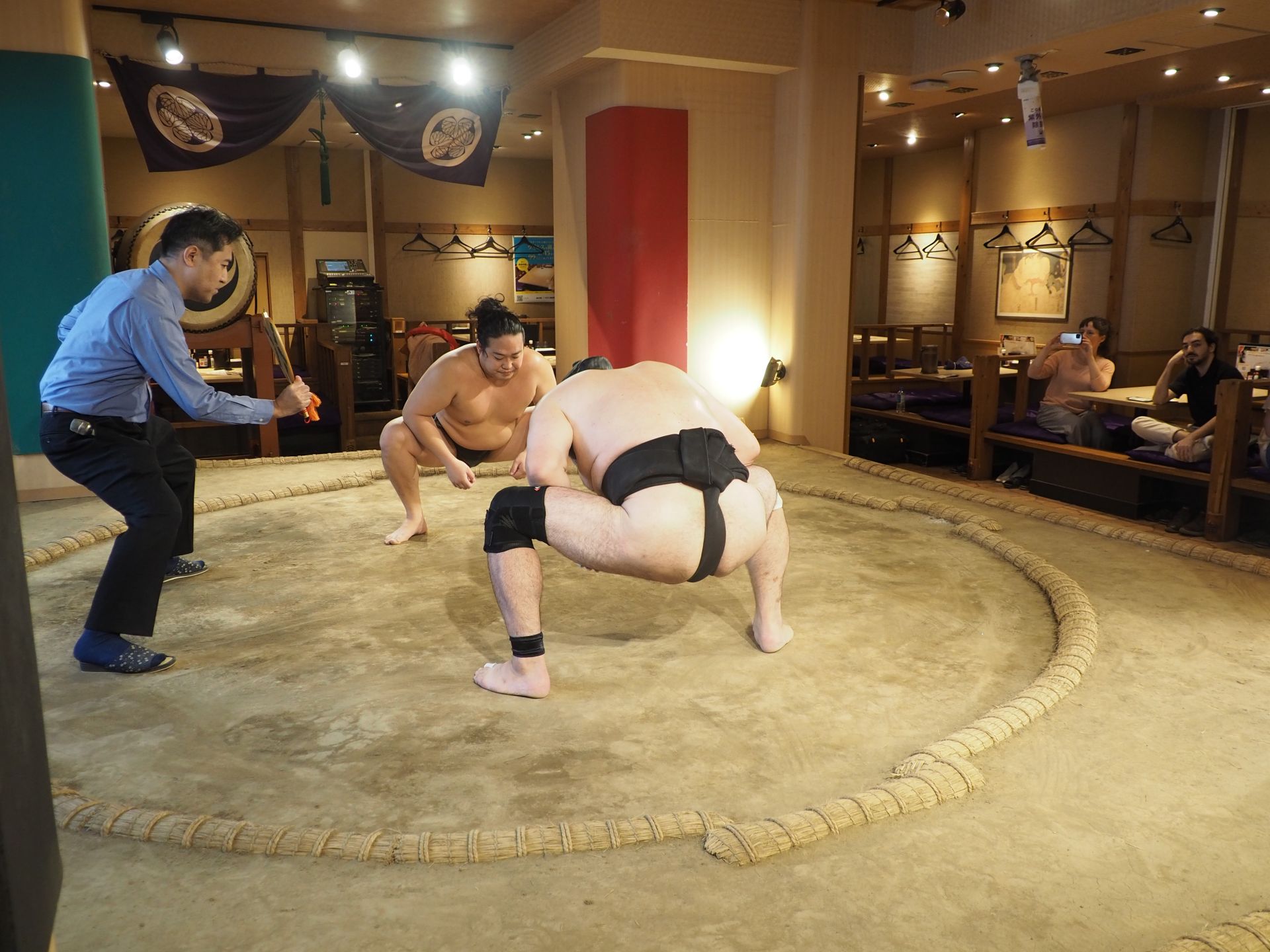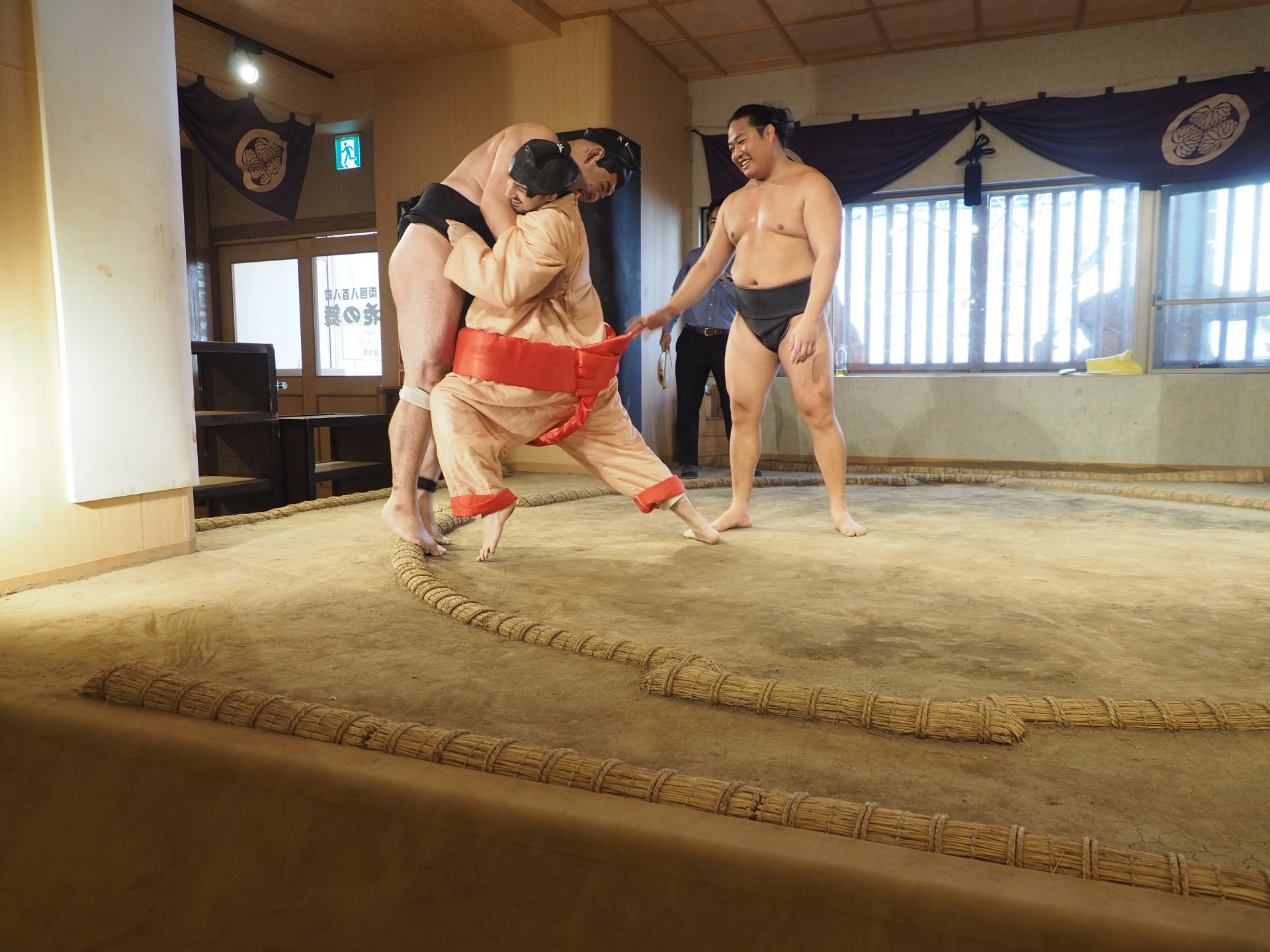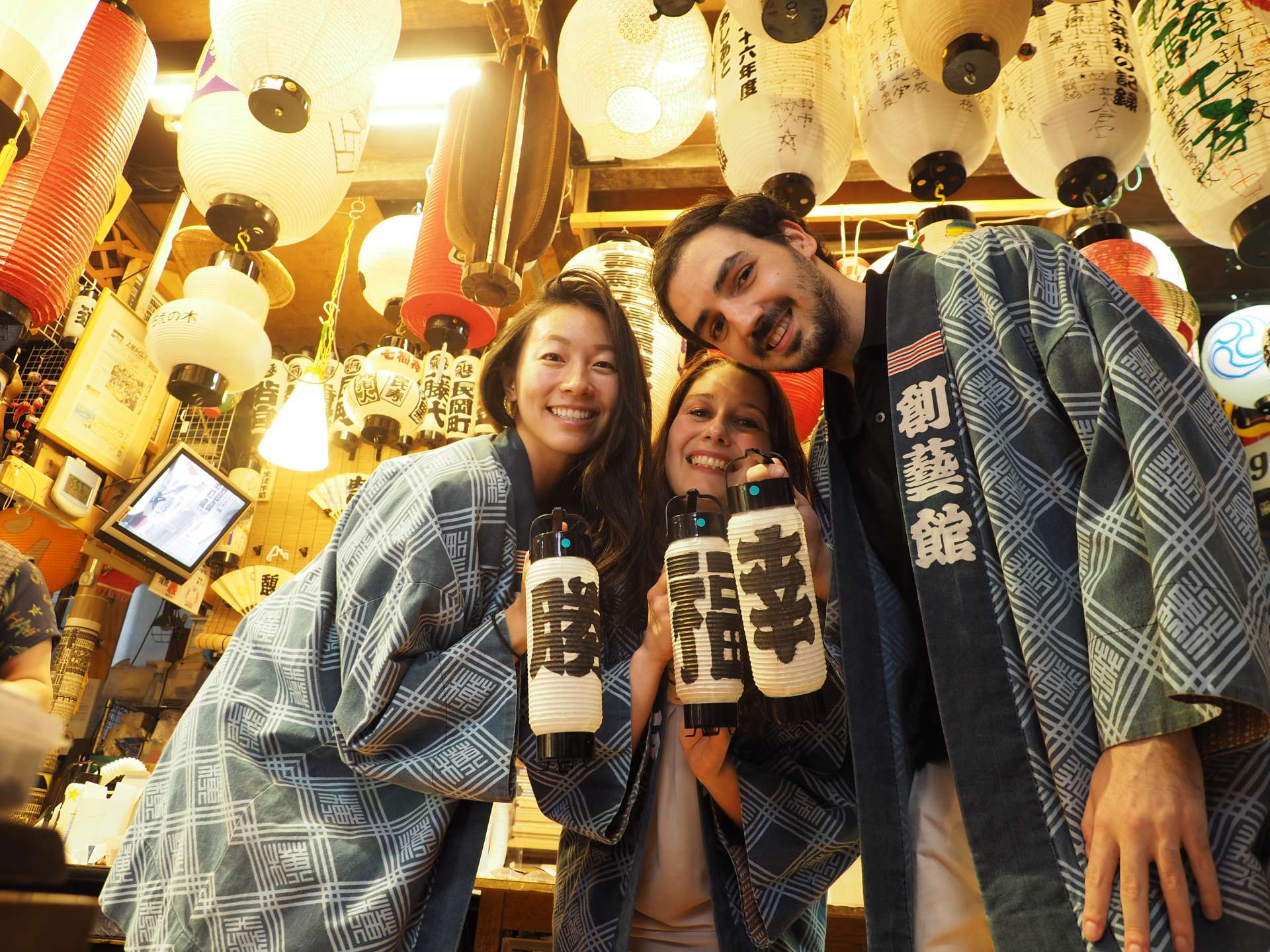
Journey to Experience Sumo Culture in Sumida Ward, Tokyo – Sumo Stable Morning Practice Viewing Edition
Sumida is the ward in Tokyo that’s home to Ryogoku Kokugikan, the venue for grand sumo tournaments and the many sumo stables where wrestlers diligently train. This is a sacred place that continues to nurture sumo culture, set among charming old-world streets and scenic views.
This tour takes you to the front step of sumo and all you need to know via a guided walk along the less-touristy destinations in Sumida Ward. Along the way you can even try your hand at traditional Tokyo crafts like making Japanese sweets and trying Edo-style calligraphy on lanterns.
※Listed prices and times refer to general visits and viewing.
Table of Contents
- Kick off with a sumo match to learn the sport firsthand.
- A guided walking tour through al the best of Tokyo’s downtown “shitamachi” streets, the homeland of sumo culture.
- Experience the delicate charm of Japanese sweets through a valuable hands-on session with a craftsman.
- Try your hand at Edo calligraphy, drawing familiar letters from sumo ranking lists.
- Wrap-Up.
Kick off with a sumo match to learn the sport firsthand.
The izakaya Hananomai Edo Tokyo Museum Mae Store features a real sumo ring inside. Besides the ring, the establishment is adorned with sumo wrestlers' handprints and photo panels throughout, making it an irresistible space for sumo fans.

This izakaya doubles as a venue for sumo shows run by former sumo wrestlers. The show provides an easy-to-understand introduction to the basics of sumo, including its history, practice routines, winning techniques (kimarite), and illegal moves (kinjite), all demonstrated with an engaging flair you won’t be able to turn away from.

In the middle of the show, mock bouts (matches) are also conducted. Although these are demonstrations, the collisions between well-trained former sumo wrestlers are still packed with the intensity and excitement you’re looking for.

Participants who wish can wear a 'sumo suit' and wig to step onto the sumo ring. Facing off with a former sumo wrestler in a mock 'big match' becomes the most exhilarating part of the show! It's a unique chance to experience the power of sumo.


The experience concludes with a chance to taste 'chanko' (a nourishing meal that helps build a sumo wrestler's physique), supervised by the former wrestler, followed by time for questions. Pictuered here, questions ranged from questions about Japanese sumo culture, that inspiration to start and the challenges faced during their active careers. Even the simplest of questions were met with meticulous answers, offering a deep dive into the real world fo sumo.


Details
- Name in Japanese
- 元力士による相撲ショー&ちゃんこランチ
- Postal Code
- 130-0014
- Address
-
1-1-15 Kamezawa, Sumida-ku, Tokyo
Hananomai Edo Tokyo Museum Mae Store (Experience Location) - Telephone
- 050-3699-4344 (Sumopro, Sirius Ltd.)
- Access
- About 3 minutes on foot from Ryogoku Station on the Toei Subway Oedo Line
※ Hananomai Edo Tokyo Museum Mae Store is the location for the experience. For inquiries regarding the program, please contact Sumopro (Sirius Ltd.).
A guided walking tour through al the best of Tokyo’s downtown “shitamachi” streets, the homeland of sumo culture.
Meet up with your guide on the banks of the Sumida River, Tokyo's symbolic river, and embark on a walking tour through Sumida Ward and Mukojima. Mukojima, a downtown area spread beneath the Tokyo Skytree, is dotted with sumo stables and historical sites.

Start off by crossing Sumida River Walk, a bridge connecting the Asakusa area (Taito Ward) with the neighbordhood of Mukojima. It's a 160-meter-long pedestrian pathway, completed in 2020, running alongside the railway tracks. The completion of this walkway has made it easier to travel on foot between two popular tourist attractions: Asakusa and Tokyo Skytree.


After crossing the Sumida River Walk, you’ll find the shopping plaza set under the rails known as Tokyo Mizumachi, and Sumida Park. Sumida Park offers a lush, open atmosphere, surprising participants with its tranquil scenery, a stark contrast to the urban core of Tokyo just across the river.

Next, visit the Ushijima Shrine located within Sumida Park. This shrine, established in 860, has a long history and is known for its grand festival held every five years.

On the shrine grounds sits a Nadeushi (petting cow) statue. It is believed that touching the same part of the cow statue that correspsonds with a place on your body you wish to heal can cure illnesses and injuries, a belief that brings locals from far and wide.

This tour not only covers major tourist attractions but also guides you to hidden spots frequented by locals for leisurely walks. It's an opportunity to discover lesser-known facets of Tokyo.

Details
- Name in Japanese
- すみだまち歩きガイドツアー
- Telephone
- 03-6657-5160 (Sumida Tourist Association)
Experience the delicate charm of Japanese sweets through a valuable hands-on session with a craftsman.
The Mukojima area, dotted with long-established Japanese sweet shops, offers enjoyable store-hopping. Among these, Saitamaya-Koume has been committed to making confections with carefully selected ingredients, like Kyoto Dainagon azuki beans, since its establishment in 1897.

This experience is a tour exclusive, allowing guests to watch as the shop owner uses hands and a small spatula to shape the sweets with patterns. Watch in awe as the beautiful Japanese confections unveil.

When the time comes to try and shadow the shop owner, many of the novice and other level-guests still manage to follow along and make remarkable little bites. Making Japanese sweets is and art with a full toolbelt of techniques, including some like using a small spatula or forming treats with a thin cloth. Join in and taste the true depth of Japanese intricate artistry.


Details
- Name in Japanese
- 埼玉屋小梅
- Postal Code
- 131-0033
- Address
- 1-5-5 Mukojima, Sumida-ku, Tokyo
- Telephone
- 03-3622-1214
- Closed
- Every Monday (if the 1st of the month or a national holiday falls on a Monday, then closed on Wednesday)
- Business Hours
- 9:00am - 7:00pm
- Access
- About 7 minutes on foot from TOKYO SKYTREE Station on the Tobu Skytree Line
- Credit Cards
- Accepted
- Official Website
- Official Website (Japanese)
For reservations and inquiries regarding the experience: Sumida Ward Tourism Association.
- Telephone
- 03-6657-5160
- Official Website
- Official Website (Japanese)
Try your hand at Edo calligraphy, drawing familiar letters from sumo ranking lists.
Visit the workshop of Atelier Sogei-kan, where the art of Edo character calligraphy is upkept. 'Edo characters' are a unique script often found on festival lanterns and sushi shop signs.

The characters used in sumo ranking lists (bansuke), which classify wrestlers into ranks like Yokozuna, Ozeki, and Sekiwake, are a form of Edo characters. These are written thickly and closely packed, symbolizing the wish for 'no empty seats' at the sumo events.

At this workshop, participants can experience drawing Edo characters on lanterns. A variety of sample kanji characters are laid out on the table, from which participants can choose their preferred character. Each kanji, like '福 (happiness)' or '愛 (love),' holds its own meaning. Join in and lose yourself in the sheer focus of recreating these beloved calligraphy characters.

Start with the outline and then fill it in evenly with ink. Although it might seem easy at first glance, especially with a sample as a guide, the task is quite challenging as you need to consider the uneven surface of the lantern.

With some assistance from the artisan, participants complete their lanterns with their own drawn Edo characters. This shadowing experience brings you to the forefront of Edo culture craft and sophistication.

Details
- Name in Japanese
- アトリエ創藝館
- Postal Code
- 130-0003
- Address
- 3-8-2 Yokokawa, Sumida-ku, Tokyo
- Telephone
- 03-3622-2381
- Access
- About 10 minute walk from the JR Sobu Line’s Kinshicho station.
For reservations and inquiries regarding the experience: Sumida Ward Tourism Association.
- Telephone
- 03-6657-5160
- Official Website
- Official Website (Japanese)
Wrap-Up
Ready to join? This tour brings you to all the best and allures of sumo via a show, a walk through Sumida Ward which has nurtured sumo culture, and even a chance to try your hand at traditional Edo crafts. It's a special tour that lets you explore a lesser-known side of Tokyo that you won’t want to miss.
As an added bonus, there’s even a tour where you can deeply immerse yourself in sumo culture by actually visiting sumo stables, which are not generally open to the public. This is part of the “Journey to Experience Sumo Culture in Sumida Ward, Tokyo – Sumo Stable Morning Practice Viewing Edition” Be sure to read about it as well.
